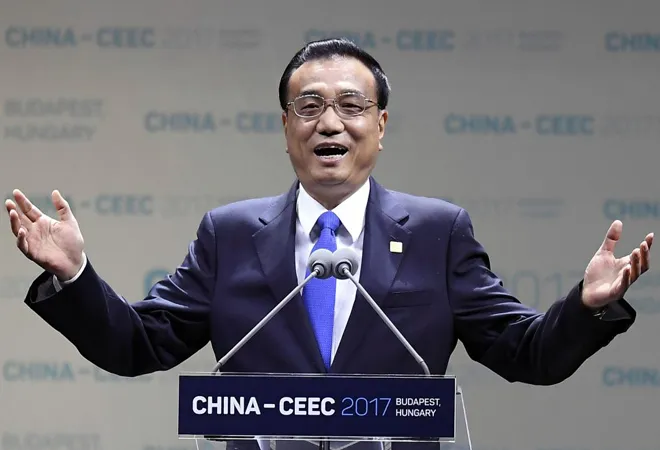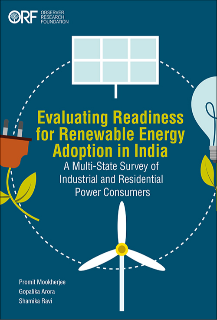 This is the fifty-first article in
This is the fifty-first article in The China Chronicles
series
Read all the articles here.
Last week, China’s National People’s Congress (CNPC) grabbed headlines with the decision to re-appoint President Xi Jinping and expand his power by scrapping term limits. The decision is part of a larger government restructuring tightening central control under the current political leadership. Among the approved changes is also a plan to establish a “state international development cooperation agency”. The new agency will play a crucial role in projecting China’s global image as a reliable development partner. Its more immediate purpose, however, is to consolidate internal structures to bolster China’s influence abroad and support the Belt and Road Initiative (BRI).
Placed under the State Council, China’s cabinet, the new agency will be responsible for the design, coordination, oversight, and evaluation of development cooperation. Centralising these functions under a single agency constitutes a significant change in a notoriously fragmented and opaque system. The agency would integrate functions from the Ministry of Commerce and the Ministry of Foreign Affairs that have until now guided the complex interplay of countless ministries, agencies, policy banks and provincial governments involved in China’s development cooperation.
The new development cooperation agency reflects China’s significance as a major provider of development finance on par with the largest traditional aid donors. Most of its official finance is not aid as defined by the established donor club, the Development Assistance Committee of the Organisation for Economic Cooperation and Development (OECD). However, a recent
study finds that, including less concessional types of finance, China committed more than US$350 billion to 140 countries between 2000 and 2014, coming close to the largest conventional donor country, the United States.
Adding the massive amounts of finance announced for the BRI, China’s global ambitions are increasingly stretching the limits of its unwieldy development cooperation architecture.
Development cooperation agencies have typically been associated with traditional donors, a label that China still rejects. Current reforms might be informed by dialogues that China has held with established donors over the past decade, especially in the China-OECD study group. With the publication of a White Paper on Foreign Aid since 2011 and the announced agency, China now shares key characteristics with other donor countries. China has also started to engage in so-called triangular cooperation in which it implements projects in developing countries jointly with OECD donors, such as New Zealand and the United Kingdom. Last year, China and Germany opened a centre for sustainable development in Beijing to promote collective cooperation in Africa. This rapprochement with other partners has fuelled expectations of closer alignment with international practices.
Development cooperation agencies are in no way exclusive to OECD donors. Other providers of South-South cooperation, such as Brazil and Thailand, have already set up similar agencies. In 2012, India created the Development Partnership Administration under the Ministry of External Affairs. Although not an agency in the typical sense, this structure fulfils comparable functions of coordinating and streamlining development cooperation. China is a latecomer in this regard and stands out above all due to the unmatched size of its global engagement.
International observers hope that a specialised agency will improve internal coordination, promote transparency, and facilitate interaction with other partners. The shift away from the Ministry of Commerce also raises expectations that China can strengthen the development orientation of its cooperation. To what extent these expectations will be fulfilled in a system that is largely about commercial lending
remains to be seen. For the moment, aid reform seems less driven by a desire to conform with international standards than by internal dynamics in China’s state apparatus. Being part of a broader trend towards concentration of power, the agency is an attempt to consolidate control over the policies and instruments at the heart of China’s global ambitions, notably the BRI. At the same time, concerns over social and environmental standards,
risks to debt sustainability and other challenges related to the BRI highlight that the success of China’s global engagement ultimately hinges on its recognition as a reliable international partner.
Improving China’s image as a major global actor will therefore be a main objective of the new development cooperation agency.
India’s perspective on China’s new agency will probably differ from the so far mostly positive international reactions. The consolidation of development cooperation under a centralised agency is more likely to feed Indian concerns over Chinese dominance. China’s alignment with donor practices would give India additional cause to denounce the “top-down approaches” of traditional donors and China alike, emphasising its own “demand-driven” approach. At the same time, India, much like China, has been engaging with traditional donors, such as the United Kingdom and the United States, in
triangular cooperation. The Indo-Japanese Asia-Africa Growth Corridor shows that India is drawing on other partners and their approaches to overcome capacity constraints and shape alternative initiatives to balance China. Against this background, China’s new development cooperation agency illustrates a broader trend of rising powers navigating the increasingly blurred lines between “North-South” and “South-South” cooperation to advance their global ambitions.
The views expressed above belong to the author(s). ORF research and analyses now available on Telegram! Click here to access our curated content — blogs, longforms and interviews.



 This is the fifty-first article in The China Chronicles series
Read all the articles
This is the fifty-first article in The China Chronicles series
Read all the articles  PREV
PREV


